Only few hours have passed since the world premiere of the new Pivot Firebird, and we are in a hurry to provide the first impressions of riding the new model. As you could already read in the official press review, a few things have changed, which in practice means even greater possibilities of adjusting the bike to the user’s requirements. How does it work in practice? Let’s find out!
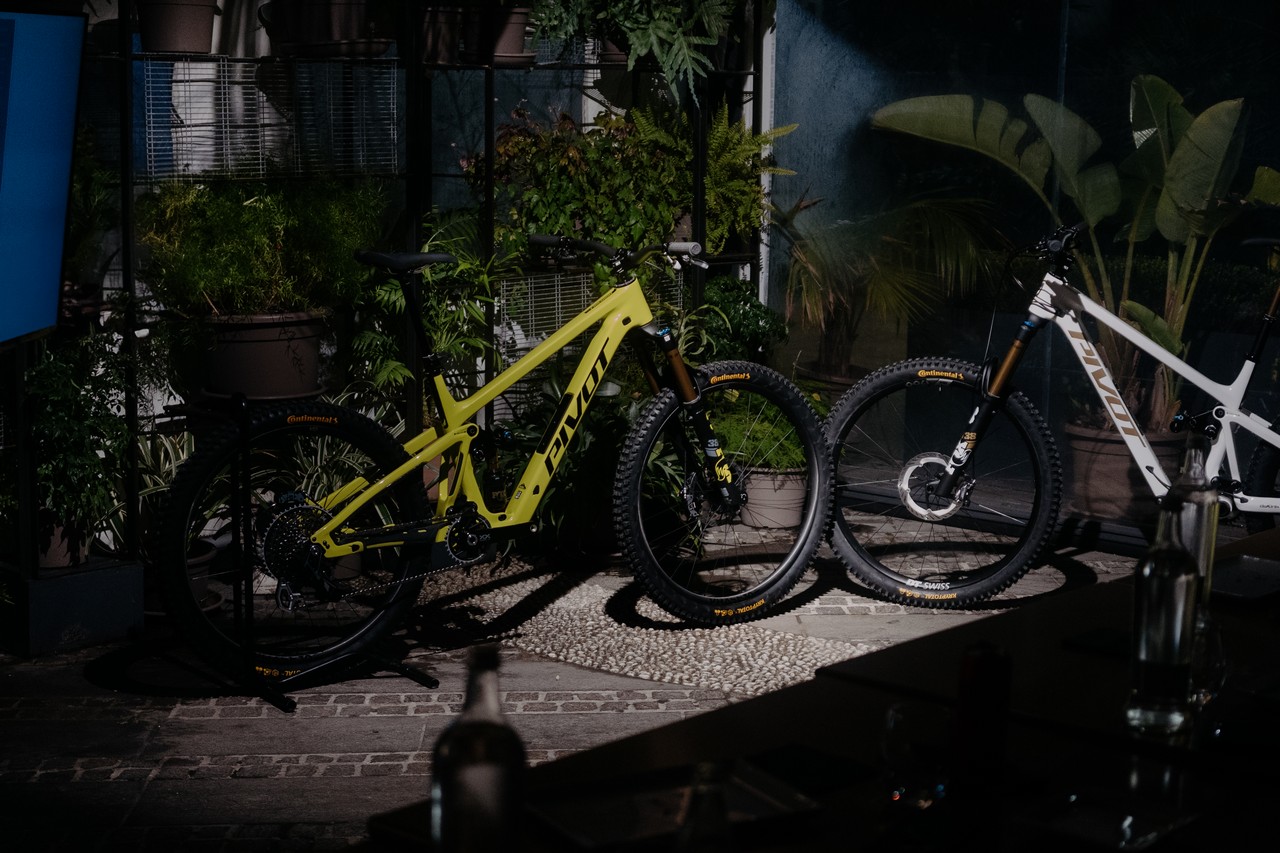
Thanks to Pivot’s Polish distributor, Protocycles, I went to Finale Ligure in Italy to test drive the new Firebird. As a user of the previous generation from 2022, I already had some expectations and knew more or less what to expect.
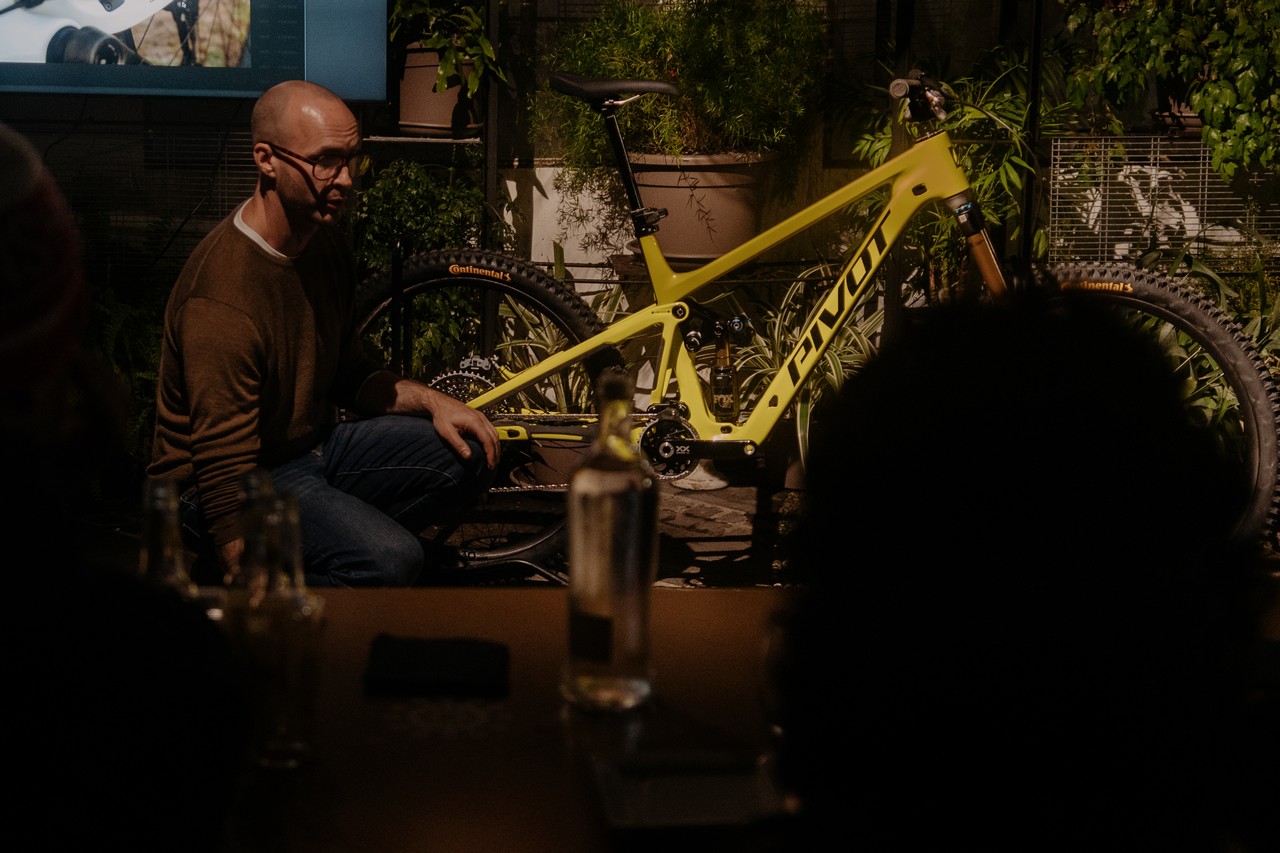
Pivot Firebird 2025
The third generation introduced to the market in 2022 changed a lot compared to the previous version. Now, however, there is no revolution, you can simply say that there has been a facelift. The changes in geometry are cosmetic, but a whole range of possibilities for adjusting the geometry to the requirements of users have been added. The idea is to “change and forget”, but for people who like to tinker with angles and perfectly match equipment to the trail, it can be a job for long hours.
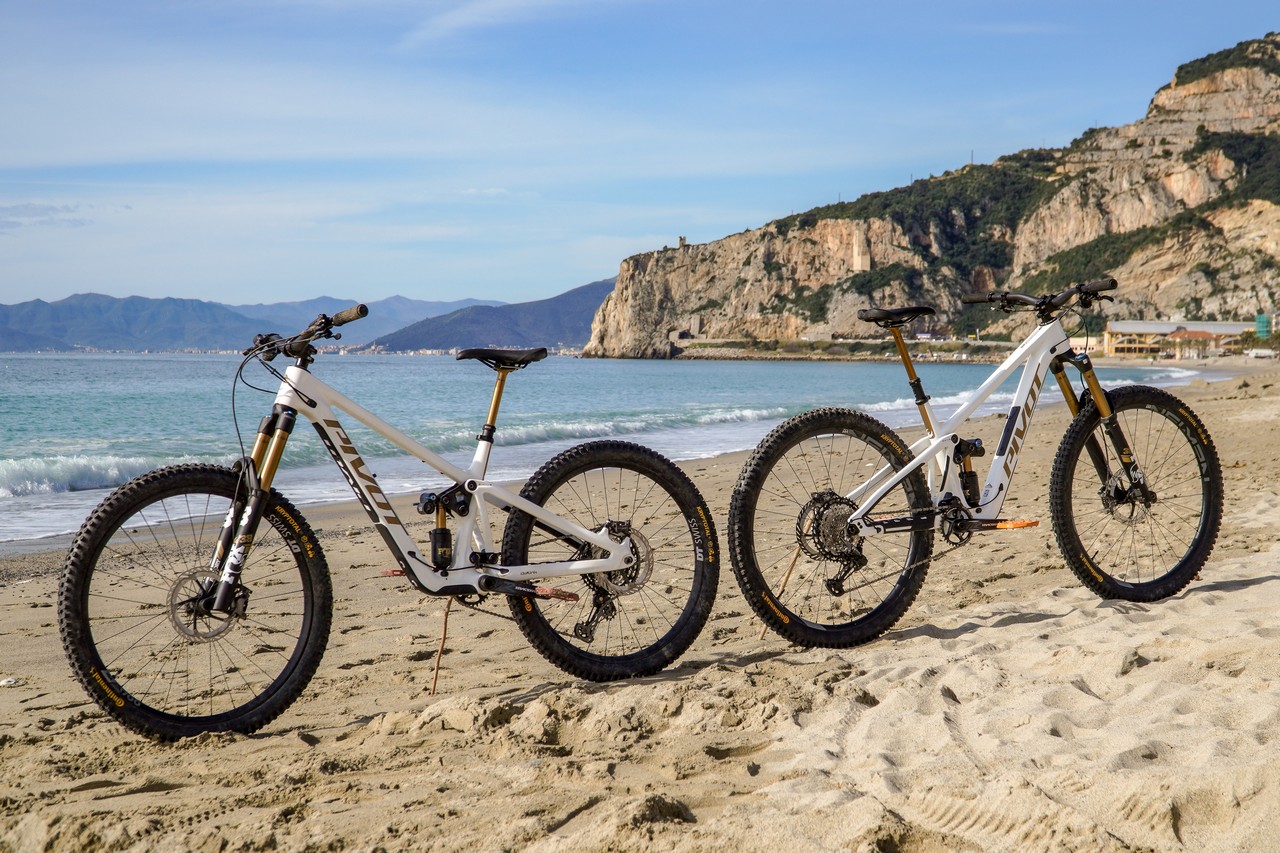
New things in the frame
Before we discuss the numbers and bike fit options, it’s worth mentioning the two most visible changes (apart from the colors, of course). In line with the latest trends, the frame has a special storage compartment where you can store anything, such as a sausage for the road or a tool kit. All of this is hidden under the bottle holder, and for quietness and organization, there’s a special bag inside. Interestingly, we get not one, but two bags, which are stuffed into the frame.
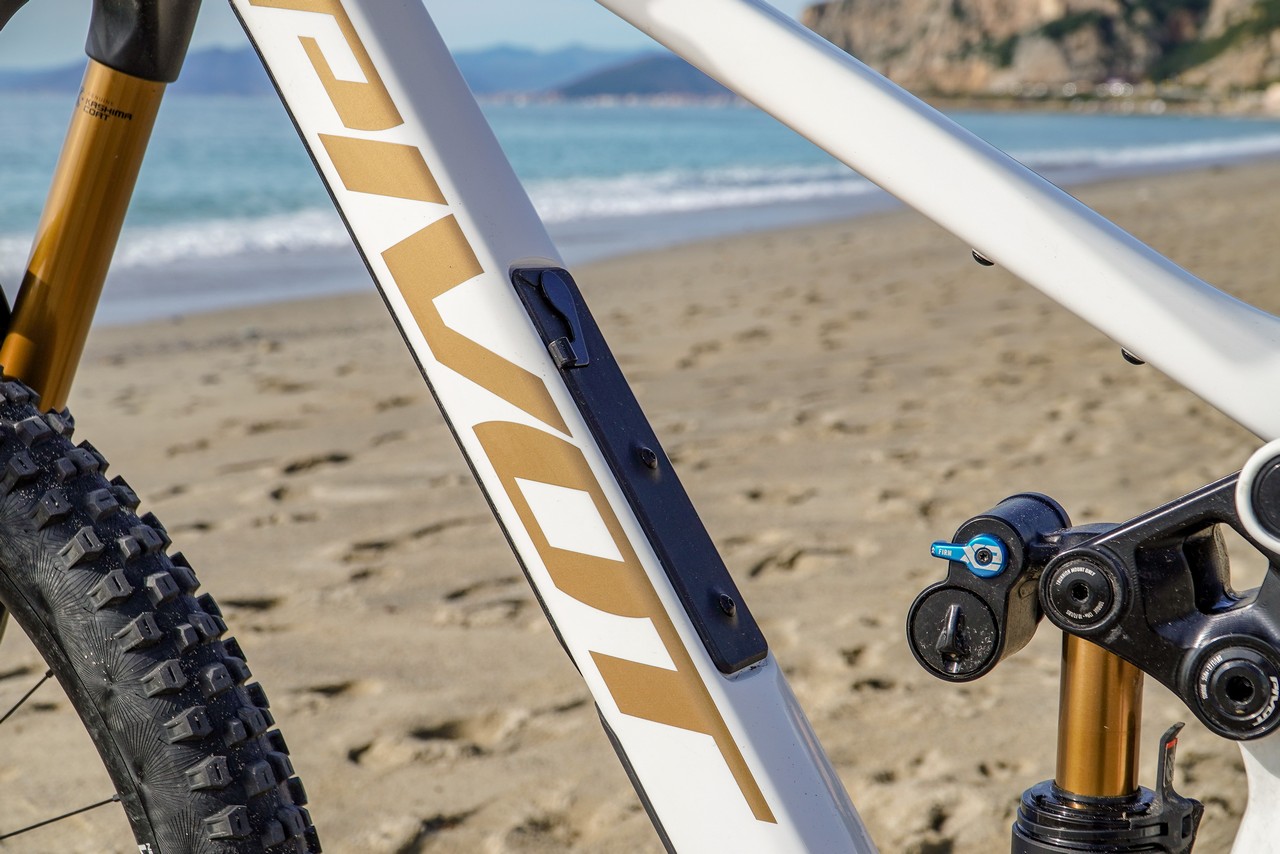
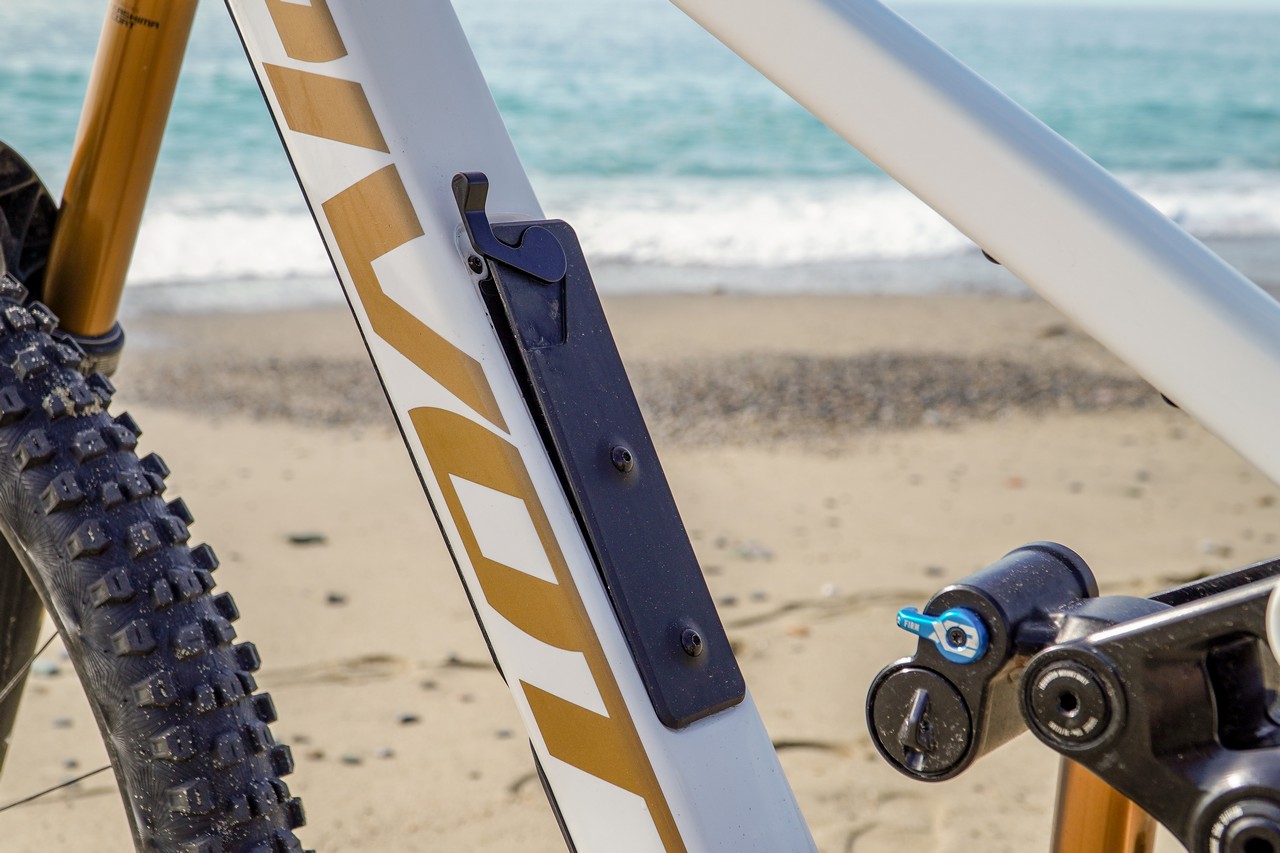
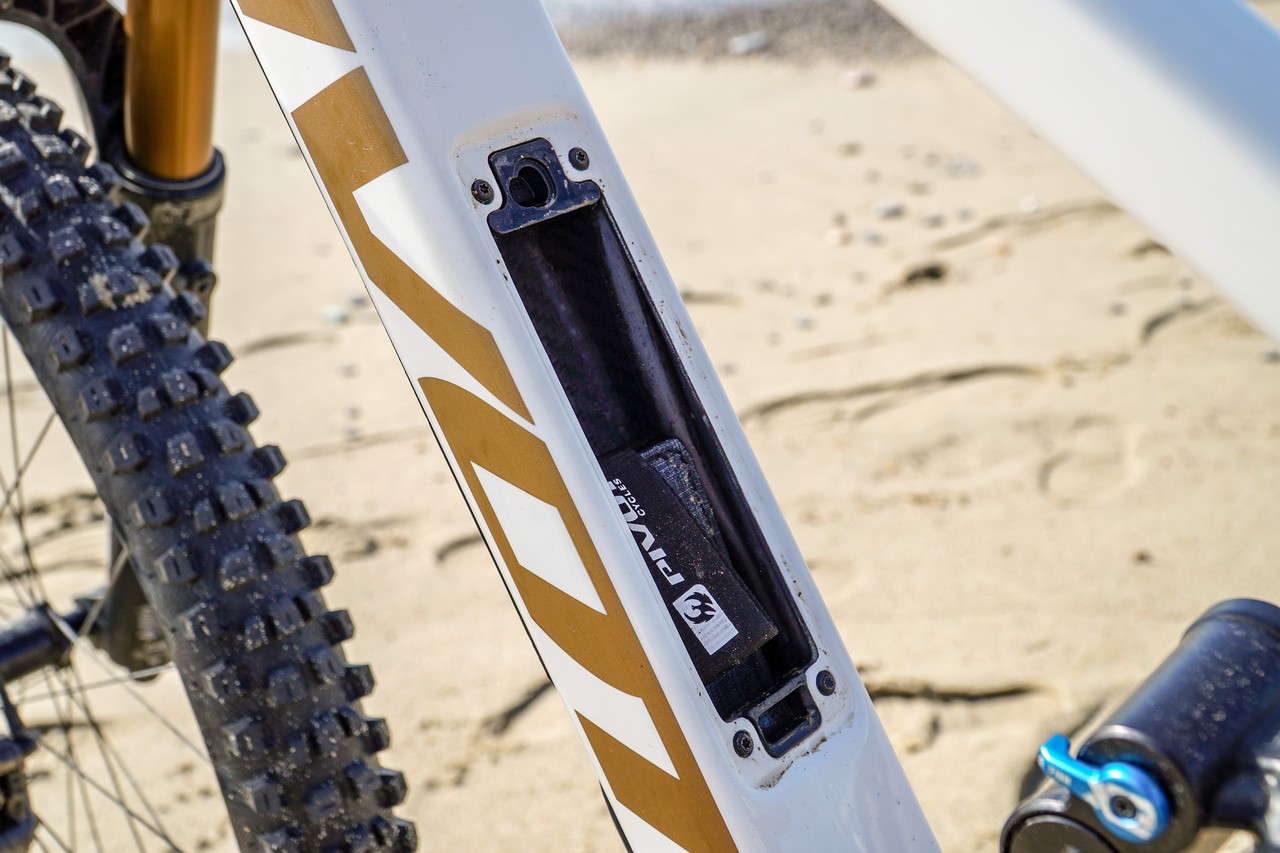
An additional bonus is the fact that the “basket” that secures the storage compartment under cover is also a cable guide, which, compared to the previous model, should significantly reduce the noise of cables hitting the frame. The cover itself also has a little secret, which is the ability to attach it with Velcro (not included) or a zip, e.g. your favorite multitool.

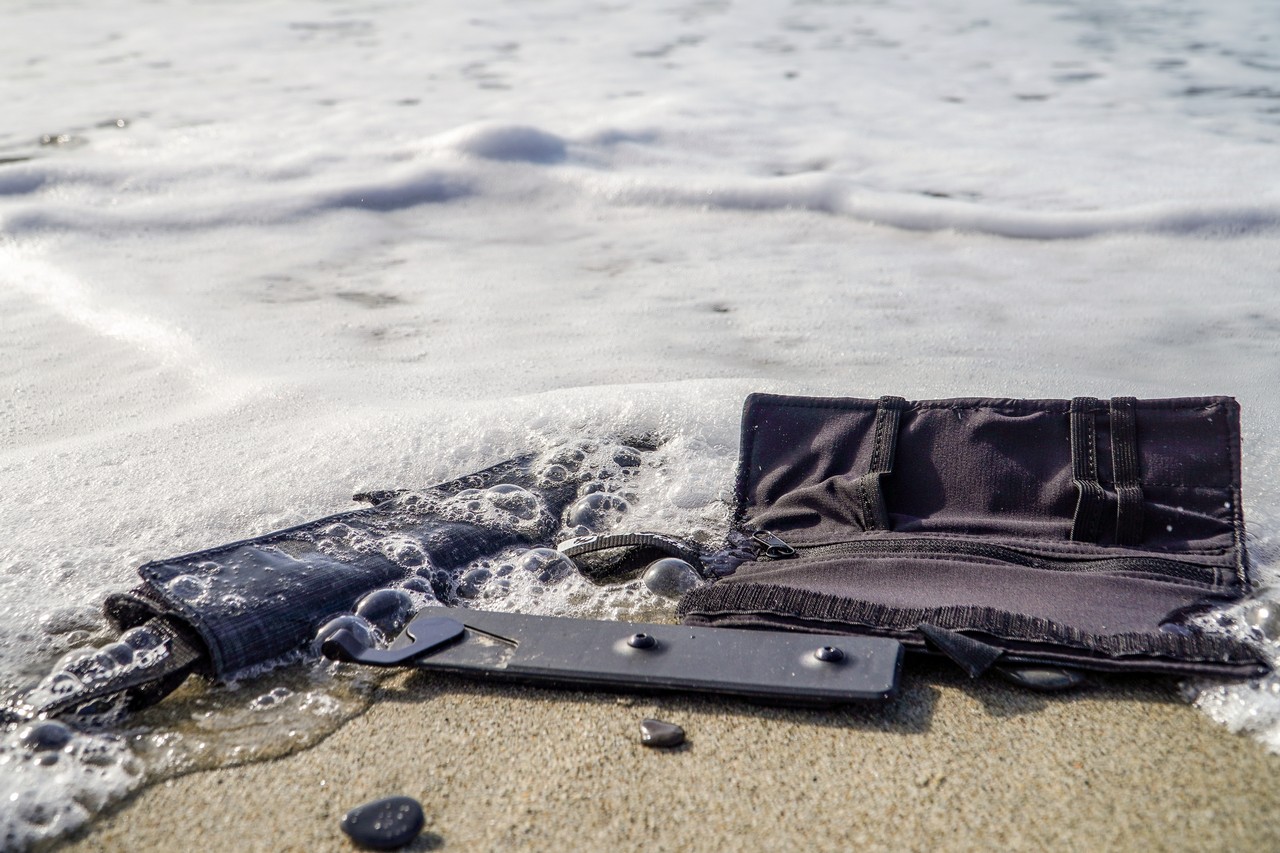
The second visible thing is the so-called Tailgate Protection, which is nothing more than an additional cover on the upper part of the downtube, which is supposed to protect the bike from damage when transporting it in the bed of a pickup truck.
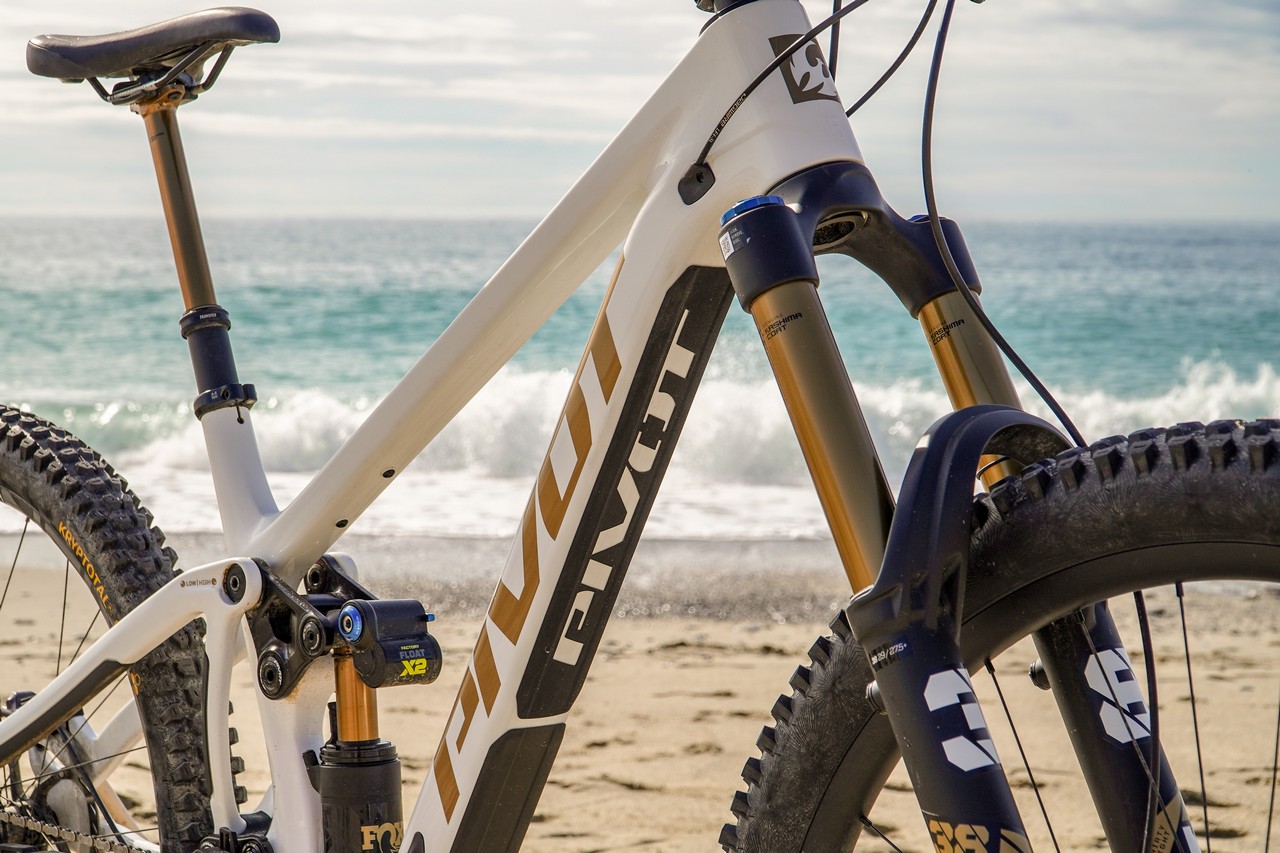
The final visual innovation is the new cable routing ports, which are now integrated under a single cover. This solution not only makes it easier to route cables for the first time, but is also more aesthetically pleasing.

Geometry
For fans of numbers, I have a small table comparing the geometry of the 2022 model with the latest one. It is worth noting that in the case of the 2025 model, the manufacturer has prepared as many as 8 (!) tables, which include the Flip Chip High/Low options, short and long chainstays, as well as Full 29er and mullet 29/27.5″ wheels.
| | | ||||||||||
| | | ||||||||||
| frame size | S | M | L | XL | | | XS | S | M | L | XL |
| wheel size | 29" | 29" | 29" | 29" | | | mullet 29"/27.5" | 29" or mullet 29"/27.5* | 29" or mullet 29"/27.5* | 29" or mullet 29"/27.5* | 29" or mullet 29"/27.5* |
| seattube length | 375mm | 410mm | 440mm | 470mm | | | 365mm | 385mm | 415mm | 440mm | 475mm |
| toptube length | 598 / 597mm | 624 / 623mm | 641 / 640mm | 665 / 664mm | | | 559 / 558mm | 595 / 594mm | 620 / 619mm | 634 / 633mm | 656 / 655mm |
| headtube length | 95mm | 108mm | 118mm | 128mm | | | 85mm | 95mm | 108mm | 118mm | 128mm |
| headtube angle | 64° / 64.6° | 64° / 64.6° | 64° / 64.6° | 64° / 64.6° | | | 63.1° / 63.4° | 63.8° / 64.2° | 63.8° / 64.2° | 63.8° / 64.2° | 63.8° / 64.2° |
| seattube angle | 76° / 76.5° | 76.5° / 77° | 77° / 77.5° | 77° / 77.5° | | | 76.8° / 77.6° | 77° / 77.75° | 77° / 77.75° | 77° / 77.75° | 77° / 77.75° |
| chainstay length | 431 / 430mm | 434 / 433mm | 438 / 437mm | 445 / 444mm | | | 431 / 430mm** | 431 / 430mm** | 433 / 432mm** | 435 / 434mm** | 438 / 437mm** |
| bb height | 350 / 350.8mm | 350 / 350.8mm | 350 / 350.8mm | 350 / 350.8mm | | | 342 / 347mm | 349 / 354mm | 349 / 354mm | 349 / 354mm | 349 / 354mm |
| bb drop | -20 / -14.2mm | -20 / -14.2mm | -20 / -14.2mm | -20 / -14.2mm | | | -10 / -15mm | -25 / -17mm | -25 / -17mm | -25 / -17mm | -25 / -17mm |
| standover | 662.1 / 667.2mm | 672.4 / 677.9mm | 693.5 / 698.8mm | 704 / 709.4mm | | | 675 / 678mm | 687 / 692mm | 692 / 697mm | 713 / 719mm | 716 / 720mm |
| wheelbase | 1207 / 1206mm | 1239 / 1237mm | 1267 / 1266mm | 1300 / 1299mm | | | 1118 / 1117.9mm** | 1218 / 1217mm** | 1249 / 1248mm** | 1272 / 1271mm** | 1300 / 1299mm** |
| stack | 615.4 / 612mm | 627 / 624mm | 636 / 633mm | 645 / 642mm | | | 618 / 615mm | 622 / 619mm | 633 / 630mm | 642 / 639mm | 651 / 648mm |
| reach | 445 / 450mm | 468 / 473mm | 488 / 493mm | 510 / 515mm | | | 405 / 410mm | 445 / 449mm | 468 / 472mm | 485 / 489mm | 505 / 509mm |
| * geometry for 29" ** long chainstay option also available +8mm |
||||||||||
As you can see, the changes in geometry are quite cosmetic, and the most important ones include a slight flattening of the head angle or reach shortening of larger sizes, as well as extending the wheel base. The biggest revolution is actually in the chainstay, which, thanks to an additional option, extend the wheel base by another 8 mm.

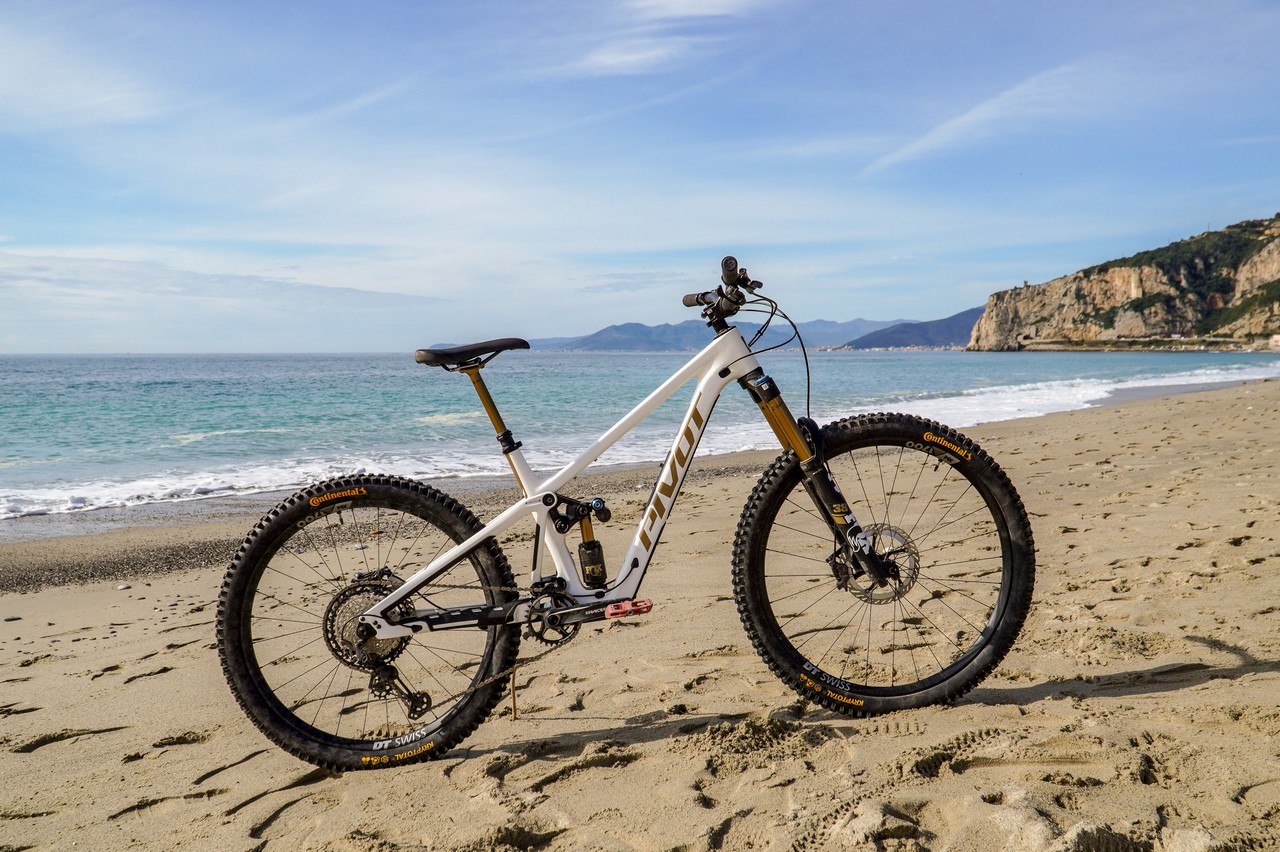
Flip Chip no.1
The Flip Chip, located in the upper suspension link, allows for quick and easy geometry changes and has two settings: Low and High. This is the same patent as in the previous model and changes the most at once. Moving from Low to High plumbs the head angle, raises the bottom bracket, increases the standover and reach, and shortens the chainstays and wheelbase.

Flip Chip no.2
The second Flip Chip is hidden in the lower shock mount. Here, after changing the setting, there is no effect on the geometry, but there is a change in the kinematics of the suspension. The choice is basically limited to more linear and more progressive. Presenting it in numbers:
- 0-100% travel: 31.8% progressivity, 26.9% linear
- SAG 30-90% travel: 15.6% progressivity, 12.3% linear

Pivot also draws attention to the slight extension of the lower suspension link, which should slightly improve overcoming small bumps at high speeds.
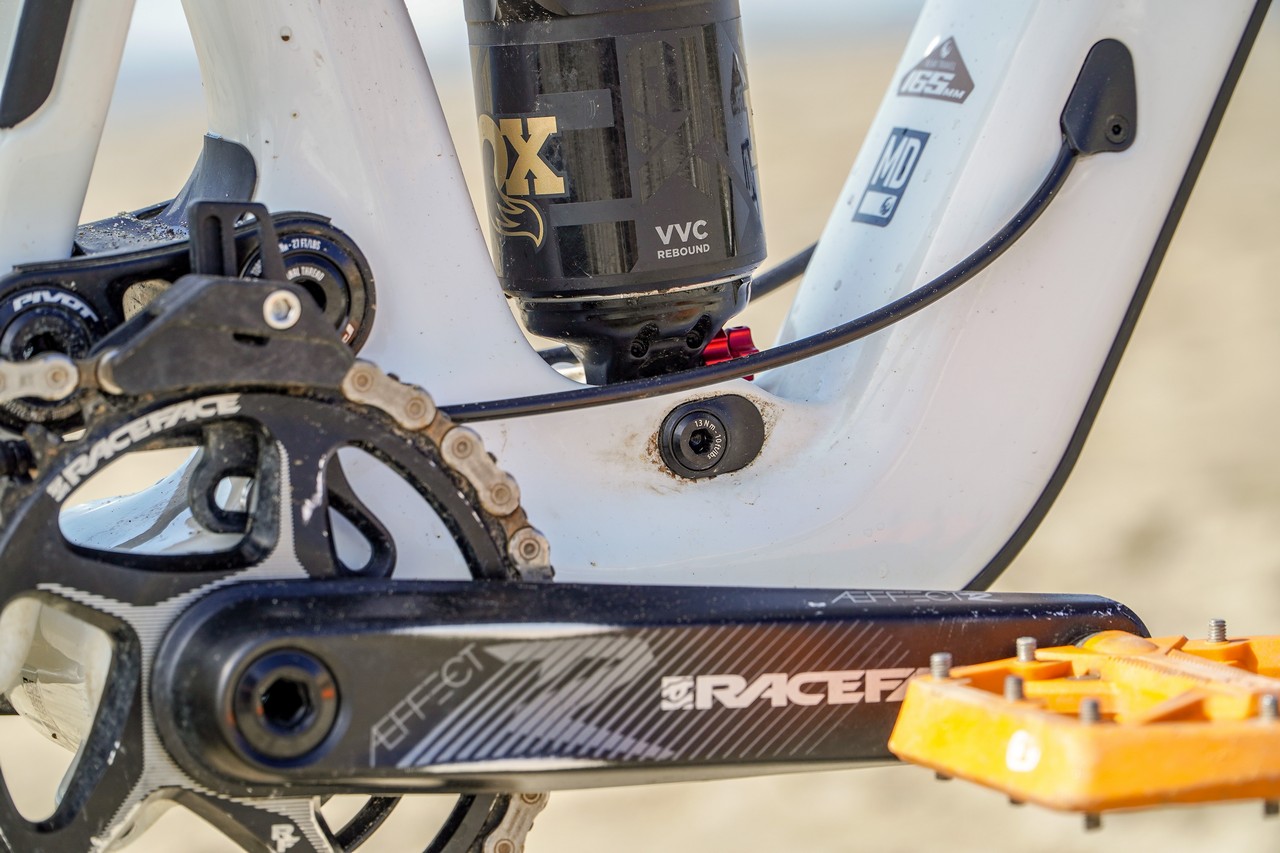
Swinger®
Swinger® Dropout System is not a club for swingers ;) but an original system for changing the length of the chainstay. Adjustment is done by turning the hanger on the drive side and putting the axle through a dedicated hole on the other side. Again, we only have two options to choose from. By default, the chainstay are in Short mode, and after changing we go to the Long option, which gives an additional 8mm to the length.
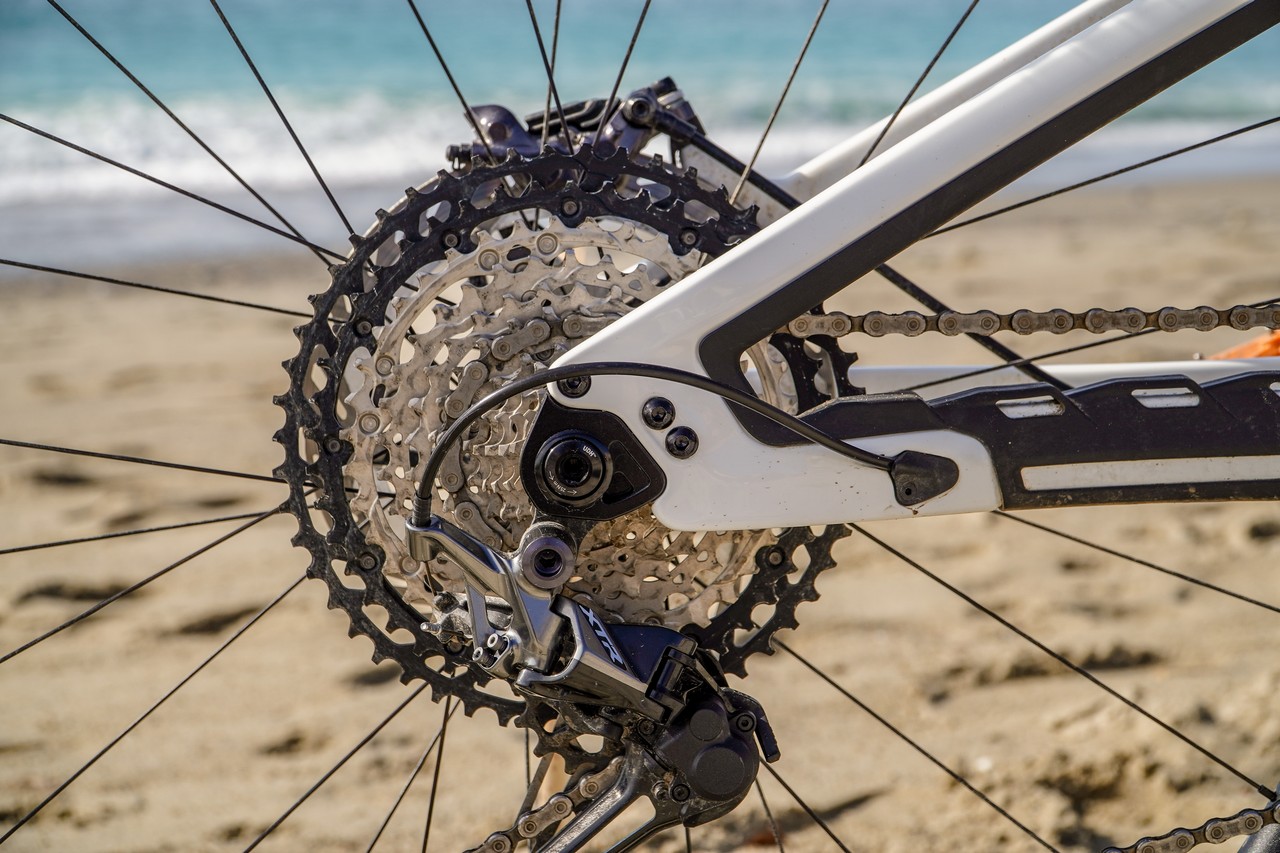
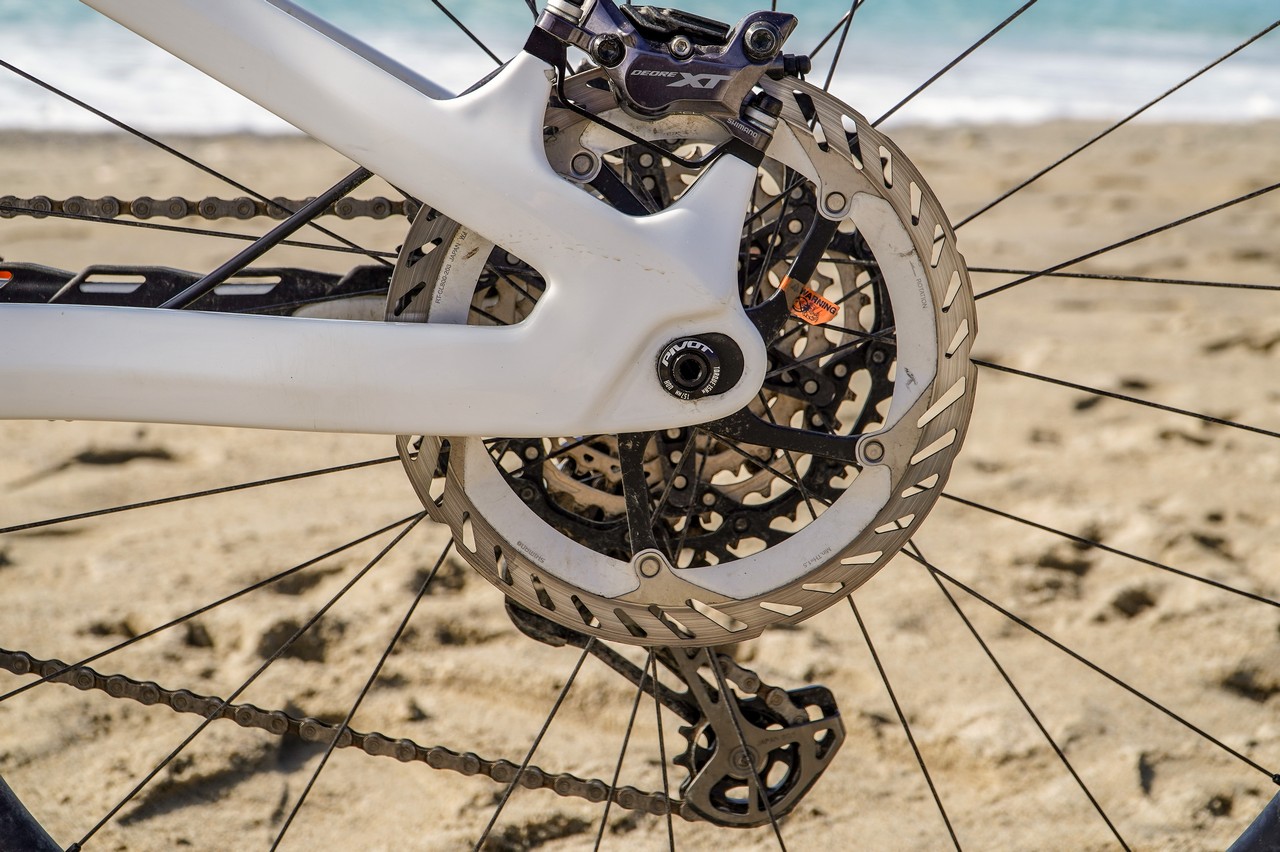
An interesting feature is the dedicated brake adapter, which when changing the fork length, simply reverses to perfectly fit the new disc position.
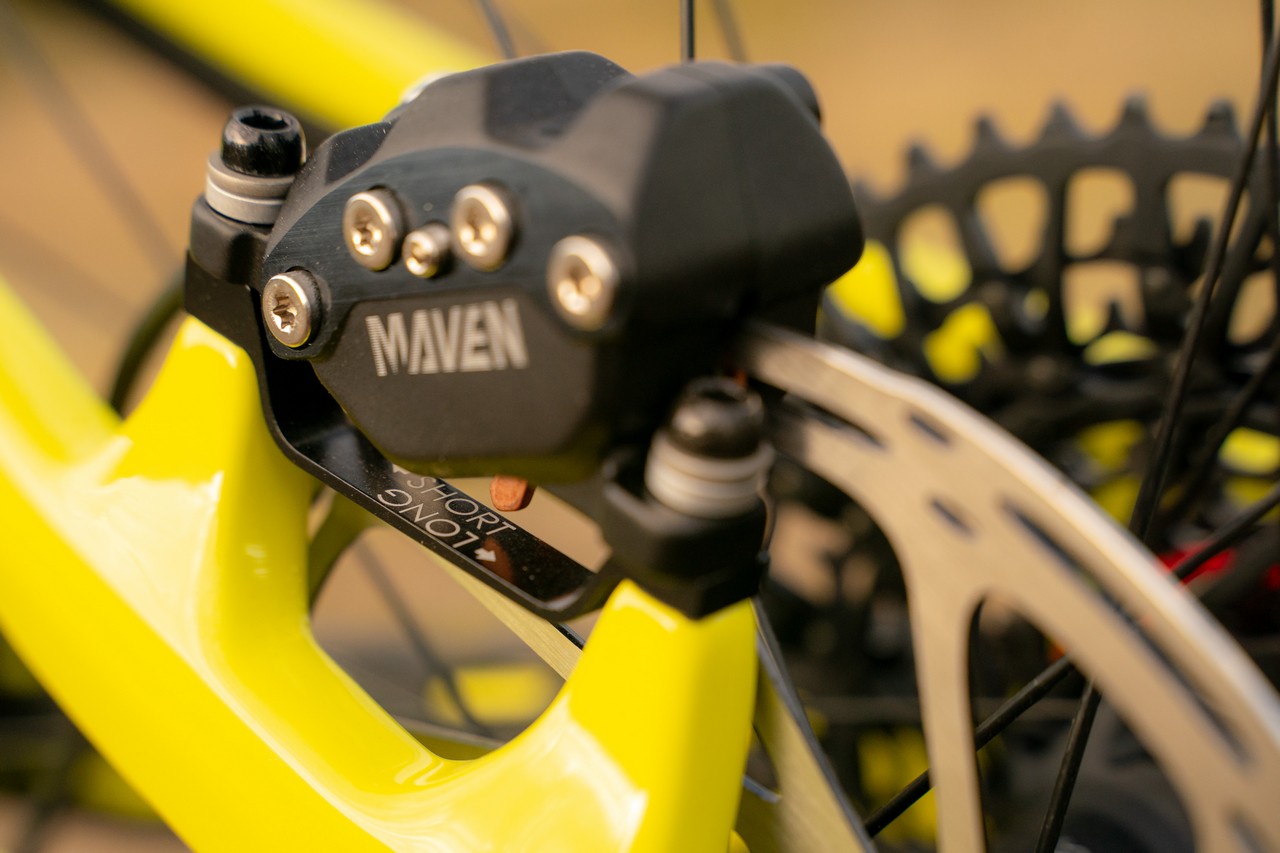
Headtube 1.5″
The Pivot Firebird is not equipped with an adjustable headset as standard, but with the standard Zero Stack 56-56 model. However, similarly to the previous model, thanks to the full 1.5″ head tube, we get the option of mounting headsets that change the head angle and reach, which gives us a fourth option to adjust the bike to our preferences. It is worth noting that the Pivot does not cause any problems in the event of a potential warranty when using headsets with a variable angle.
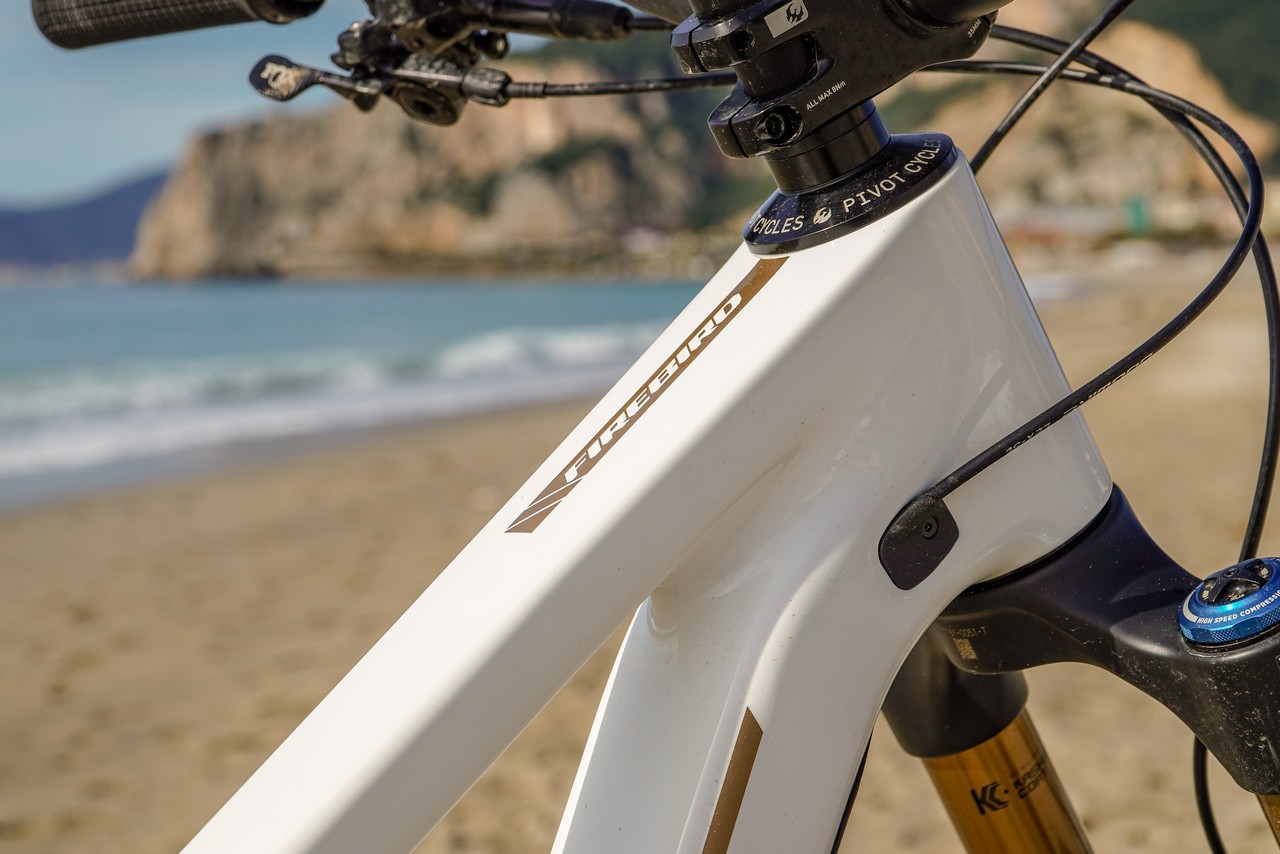
New handlebar & stem
The latest innovation is the cockpit, which is a stem and handlebar signed by Pivot Cycles. The carbon Phoenix Team Carbon 35mm handlebar is available in Pro and Team specifications (sizes MD-XL). The fiber layout has been designed to provide a balance between strength, stiffness and vibration absorption. In turn, the Phoenix Team Enduro Stem V2 stem has a 7-degree rise and is available in Pro/Team specifications in various lengths: 32mm (XS), 40mm (SM-LG) and 50mm (XL).
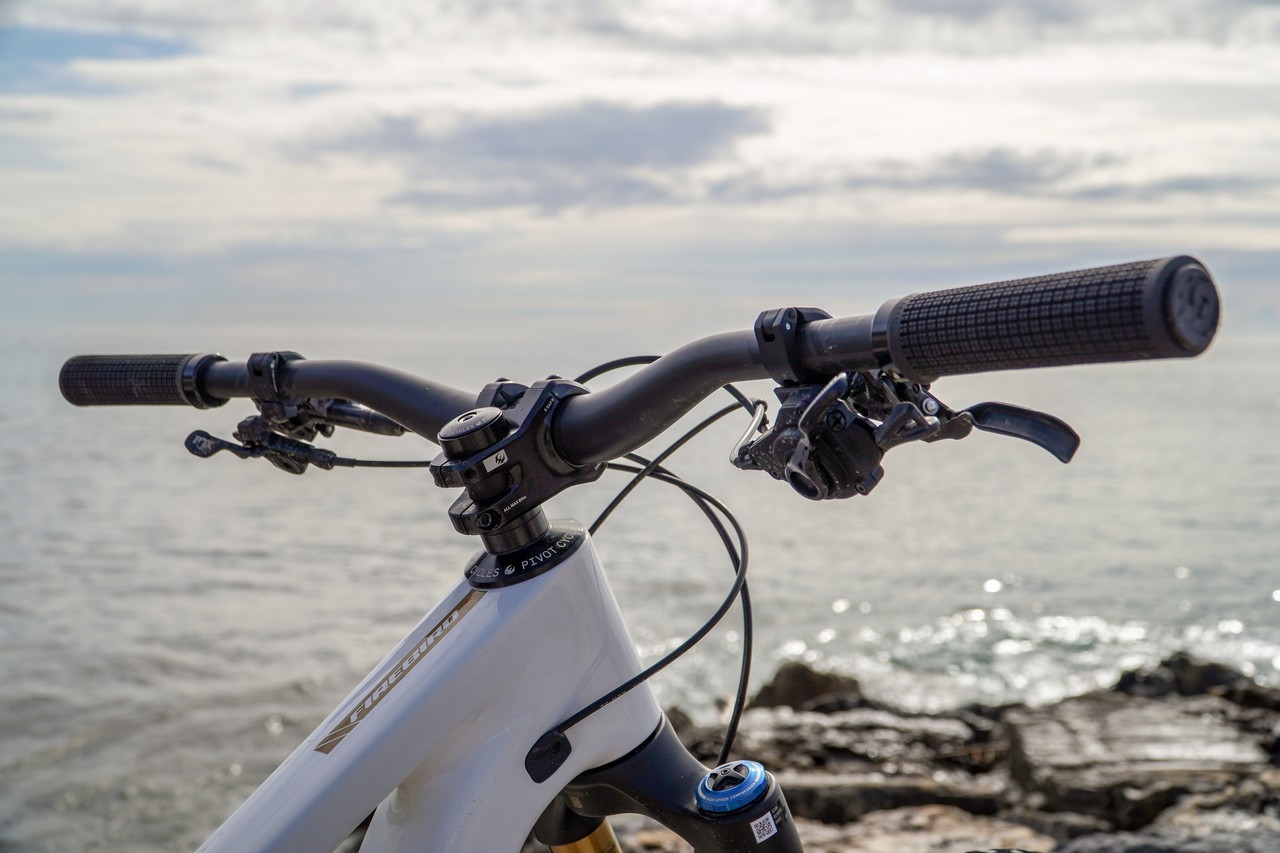
How does it ride?
The practical tests unfortunately weren’t very long, but they were very intense. The trails in the Italian mecca of European enduro, Finale Ligure, were perfect for testing the capabilities of the new Firebird and playing with new settings. Our plans were somewhat thwarted by the weather, which in the second part of the day decided to go towards a fight for survival on stones and mud in the constant rain. However, thanks to the Evolve Finale team, we squeezed the most out of what we had, and at the same time we rode the most interesting and iconic trails in the area.

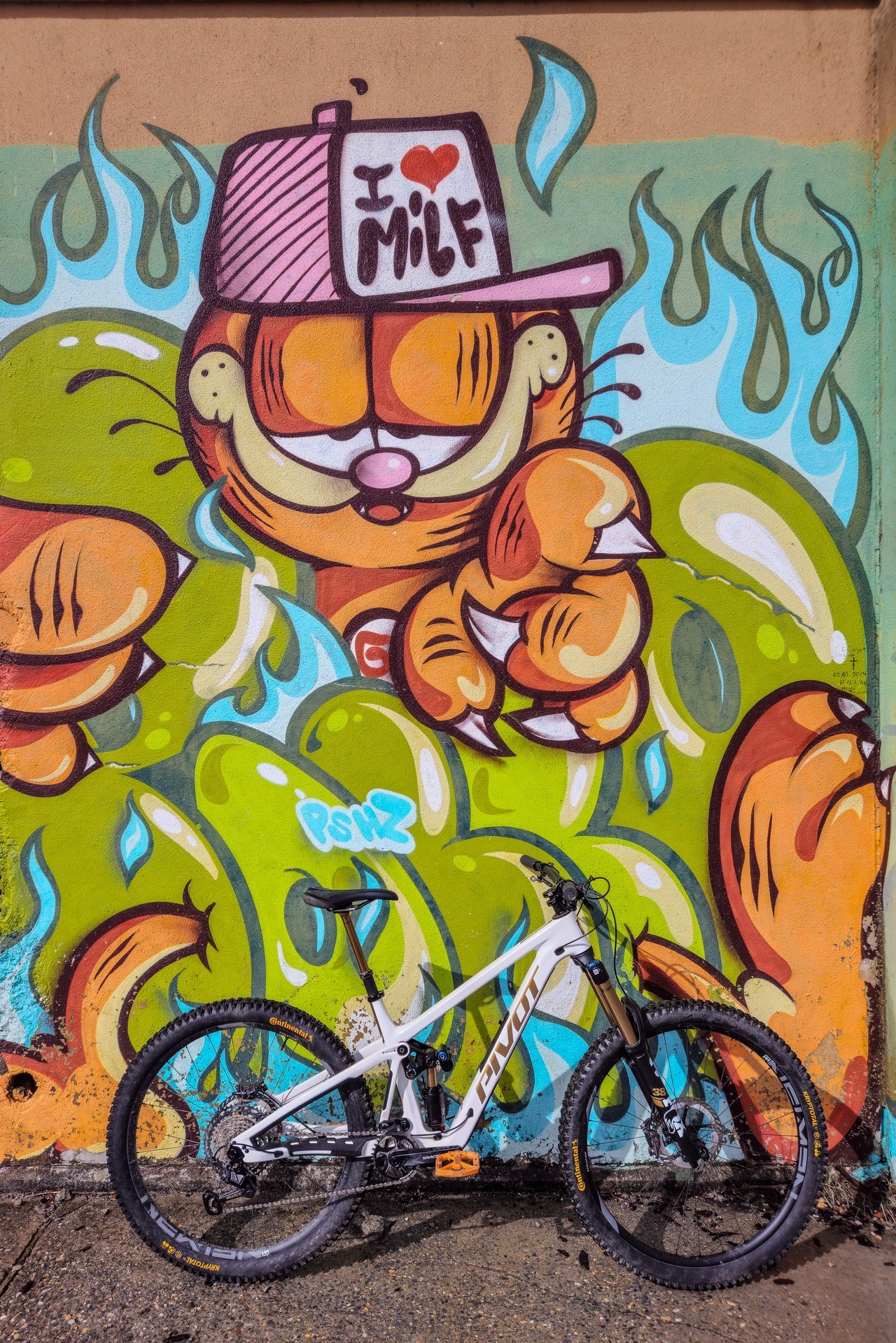
My riding experience is similar to the 2022 model, I would even venture to say that I don’t feel a major difference. The fourth generation dw-link suspension works great when riding downhill, small bumps are absorbed perfectly, and thanks to the large progression of the suspension, bottoming out is almost non-existent. Unfortunately, due to the weather, I didn’t have time to check the more linear option of the suspension. In the progressive mode, the suspension, despite being very sensitive at the beginning, doesn’t fly through the jump, and hardens significantly at the end. The bike is very stable at any speed, and in the mullet option, we also gain agility, which is key in tight turns. Hardening of the suspension during braking is imperceptible.
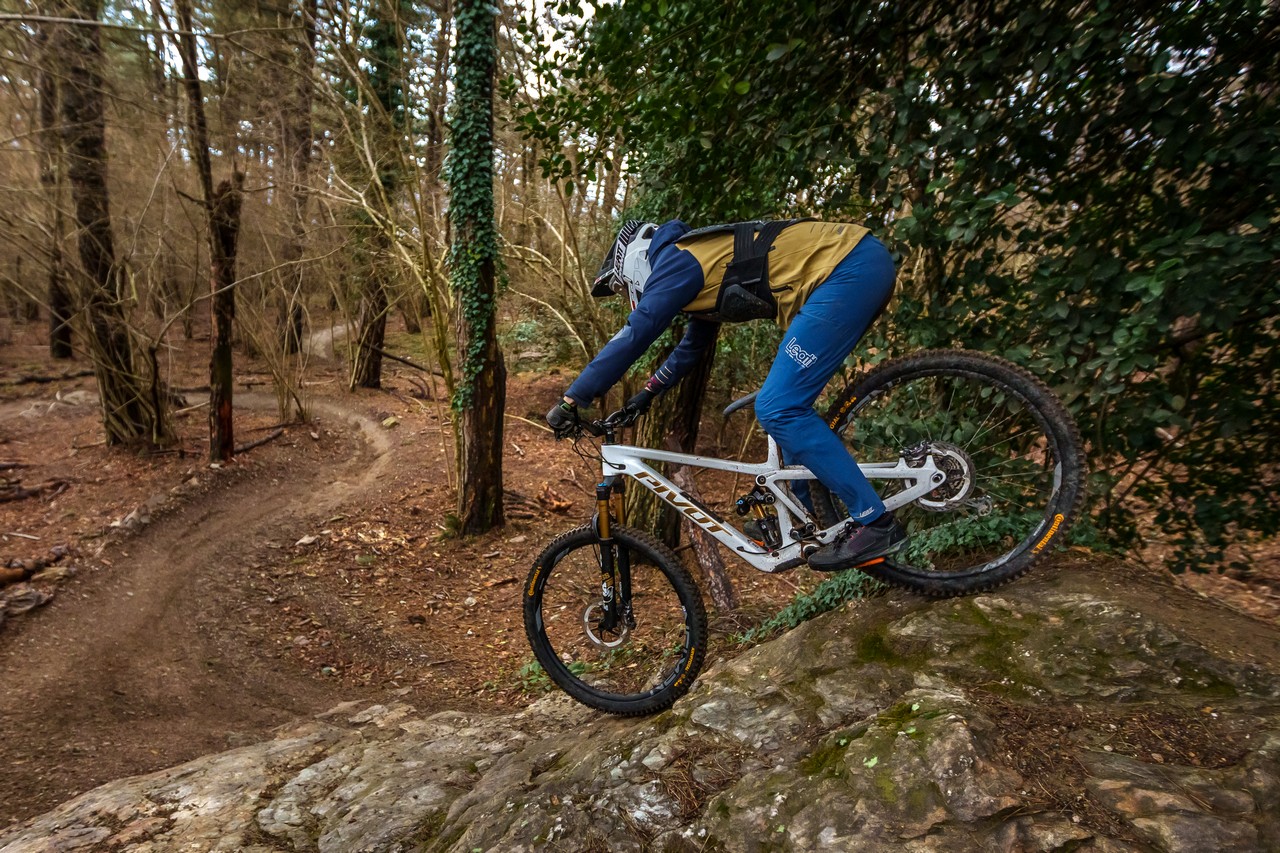
I managed to verify the mullet option, which is a very interesting proposition that I planned to implement in my bike (now I will have more motivation!). Changing the rear wheel to a smaller one makes the bike much more agile and eager to play, while maintaining full stability and feeling as in the case of a full set of 29″ wheels. This comes at a huge cost during climbs, where you can feel the biggest change to your disadvantage and even the smallest climb became a bit more demanding.
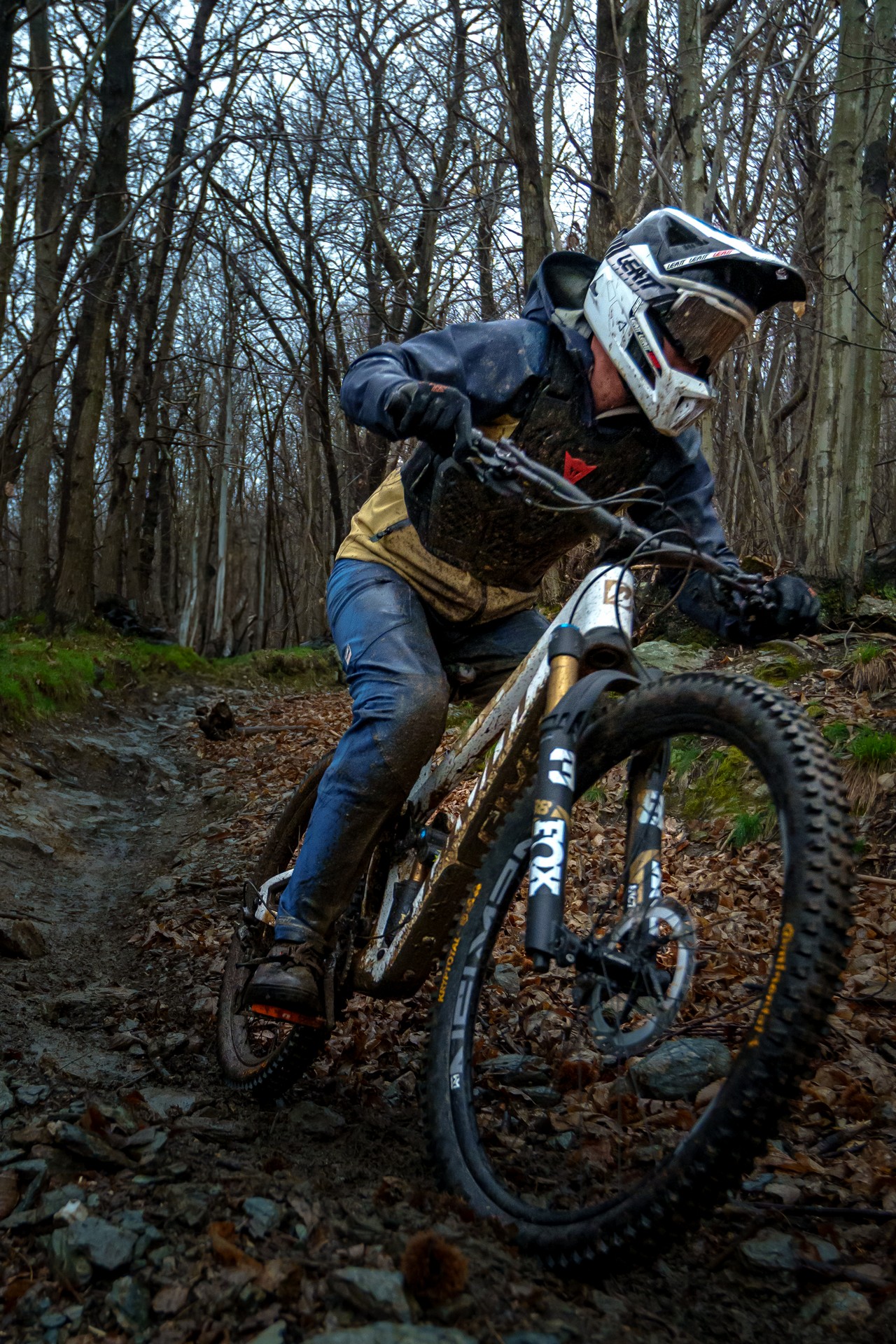
Also, changing the Flip Chip from the top link makes the Firebird’s behavior noticeably different. By default, the head angle is slightly steeper and the reach is longer. This setting is more preferable for jumping, although it should be noted that the Firebird also flies great in the Low option.
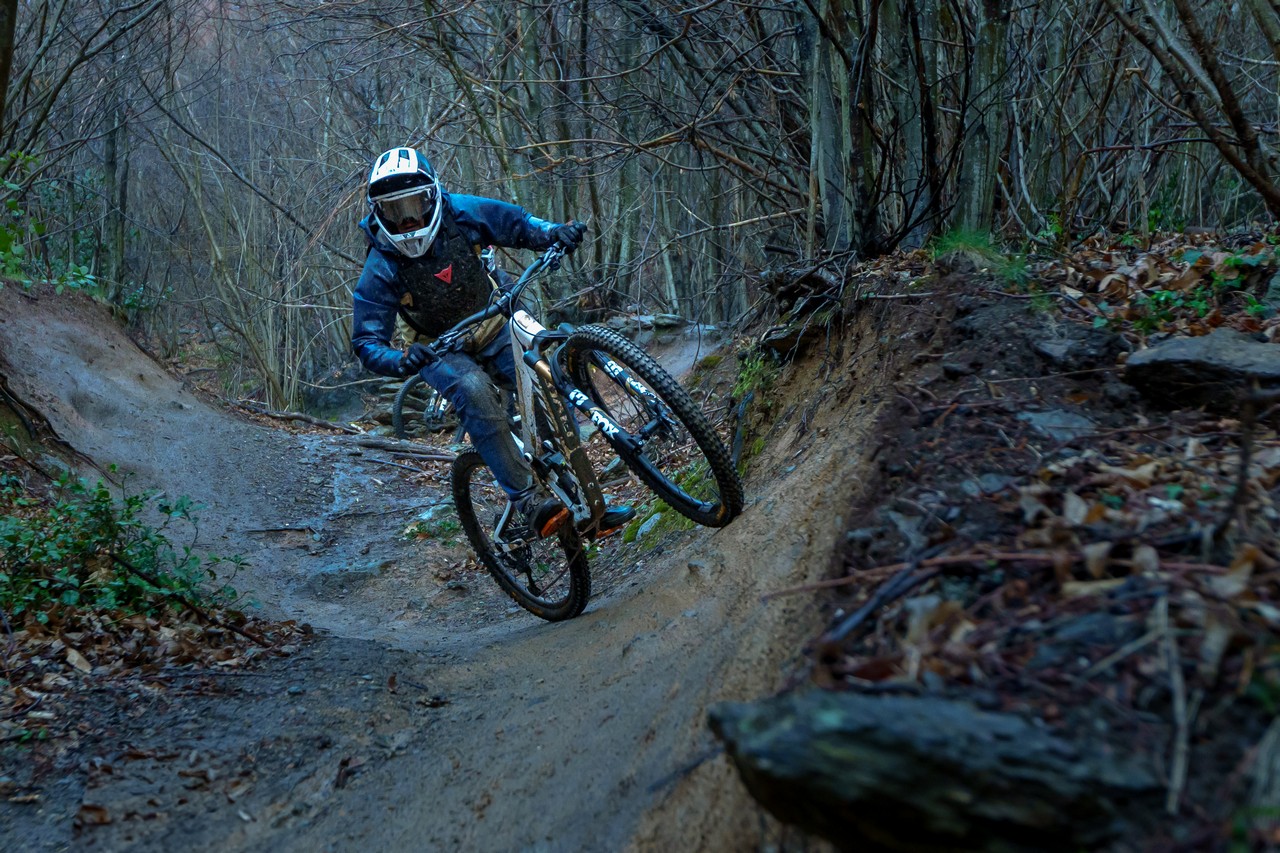
Summary
The 2025 Pivot Firebird is still an excellent bike that descends and flies great. The climbing capabilities are also good, which makes it a very good choice for people looking for a mini-dh style bike, but with the option of going uphill. It’s also a great choice for racing, and with the ability to adjust the geometry in many ways, we get a really big field for tinkering with angles, numbers and the overall character of the bike.
Tomasz Profic, 43RIDE
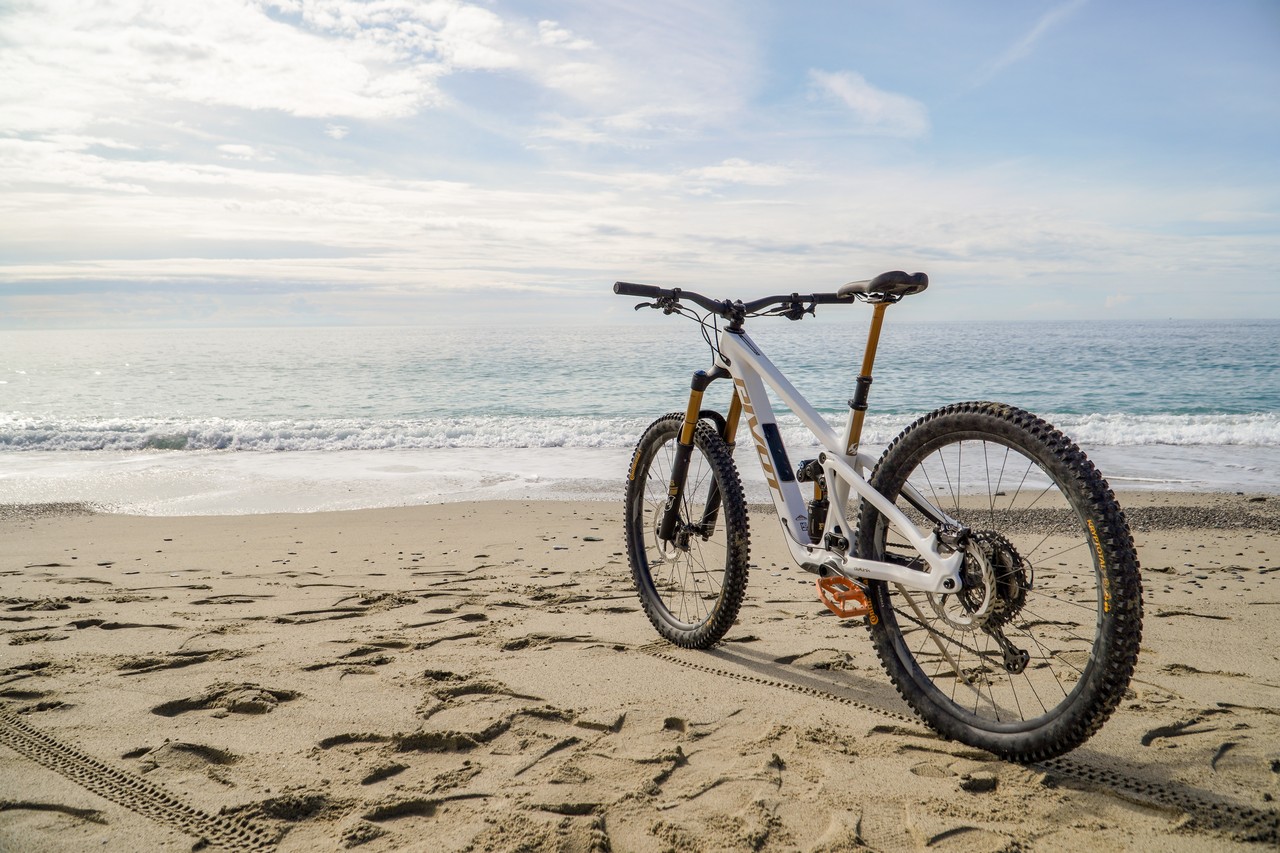
For more details visit: pivotcycles.com/products/firebird
About Pivot Cycles
Unlike our bikes, culture cannot be engineered: it grows from within. When Chris Cocalis founded Pivot Cycles in 2007, he had a vision for a company committed to designing and building the world’s best performing bicycles. Engineers, designers, athletes, industry veterans, and storytellers joined him one by one. The Pivot Cycles vision became a shared vision, and the mutual desire to push the mountain biking performance envelope tied all of us together in a way that can only be described as, well, a family. As a company, we have our own list of family values, and it begins with “people”.
Official website: pivotcycles.com
Media: facebook, instagram, twitter, youtube, vimeo
